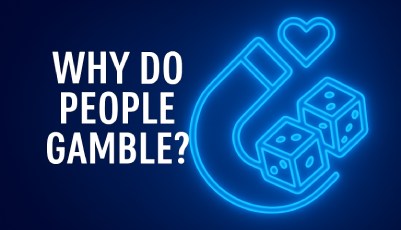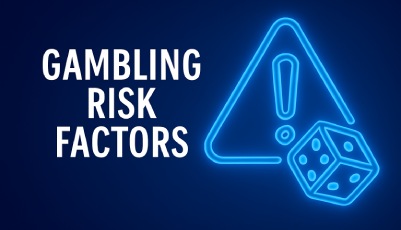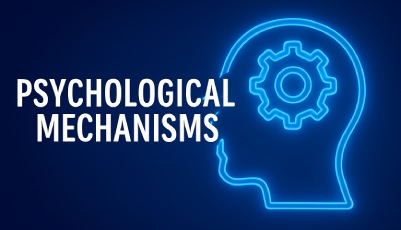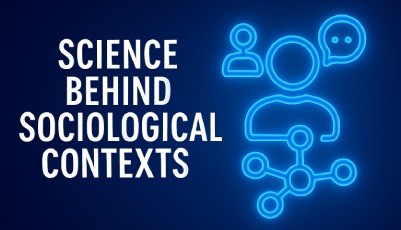What Are Gambling-Related Harms?
In a 2016 paper, Langham et al. (2016) posed that gambling-related harms were negative consequences that resulted from engaging in gambling. In doing so, they broke down the harms into different categories, including financial, emotional, health, and relationships. For instance, people who gambled were at risk of financial instability due to a loss of their disposable income on wagers. The paper went on to suggest that these negative consequences did not just affect the people who gambled but also spilled over to the rest of the community.
How Are These Harms Measured?
Over the years, researchers have used various tools to measure the effects of gambling harms on gamblers and society as a whole. In a (McDaid & Patel, 2019) report, the authors compiled them as follows:
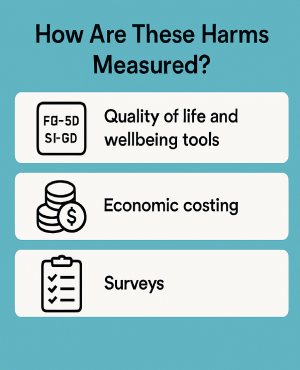
- Quality of life and wellbeing tools: These assessments (which include EQ-5D and SF-6D) enable researchers to understand the daily lives of gamblers by having them answer a wide range of questions related to their physical and mental health. Once these have been scored, the researchers weigh them against the scores of people who do not gamble and are thus able to gauge how much gambling can affect one’s health.
- Economic costing: Researchers use various approaches in this regard. First, they look at the direct expenses incurred to provide services related to gambling, such as healthcare, security, or welfare. Secondly, they review the indirect costs of gambling, such as absenteeism from work, reduced productivity in the workplace, and truancy. Finally, they look at costs that do not come with price tags, including the breaking up of marriages, absent parents, the hopelessness and anxiety of losing money or time to gambling, etc. These numbers enable them to quantify the effect of gambling on society.
- Surveys: Through questionnaires, researchers are able to gather quite a lot of data about gamblers. One such tool is the Problem Gambling Severity Index (PGSI), which measures the extent of a person’s gambling habits. For example, someone who often chases losses will score high on this index. Other tools include Short Gambling Harms Screen (SGHS) and GHS-20 (Gambling Harms Scale), which review the actual harm caused by the gambling and how much it affects one’s health score, respectively.
“Gambling-related harm is not costless, it has very tangible impacts, for instance on the use of police, criminal justice and other resources, as well as affecting insurance premiums.” — McDaid & Patel, 2019, Measuring Gambling-Related Harms: Methodologies and Data Scoping Study.
Can We Prevent These Harms?
While studies show that gambling poses a risk to all individuals, a 2020 study found that the risk was greater in individuals who spend a lot of time or money on gambling, enjoy high-risk wagers, or like to escalate their gambling in search of more excitement (Browne, Hing, Russell, and Li; 2020). As a result, researchers have suggested the use of several preventative tools, including the following:
Brief Interventions
These are conversations where gamblers are called to reflect on their gambling habits and how they affect their goals (Cowlishaw et al., 2019). Often taking one to three sessions, they have been shown to reduce gambling behavior and can be just as effective as longer treatments.
Gambling Operator Identification
In recent years, more licensing bodies have urged or even required operators to implement strategies to identify and address problem gambling in their sites. According to Škařupová et al. (2020), these tools can help gamblers be more aware of their patterns and take action before their behavior escalates.
Youth Programs
These programs aim at educating young people about gambling odds, risks, and myths to help them understand what gambling entails (Davis et al., 2025) and make informed decisions. For instance, the Ludens Program in Spain used interactive workshops to educate adolescents on ethical gambling, and it had a significant impact on their gambling frequencies and willingness to engage in risky gambling (Chóliz, Marcos, & Bueno, 2022). A systematic literature review conducted across 32 youth programs echoed the same, stating that the program had resulted in less gambling severity and significantly addressed the cognitive biases that the participants had before the programs.
Given the results of case studies as well as the research on the effects that gambling can have on our society, we believe that there is a need for more research into how society can implement more interventions to protect not just the gamblers but also their communities.
FAQs
These are the negative consequences that arise from gambling activities and fall into different categories, including health and finances.
Gambling-related harms do not just affect the gamblers. Instead, they affect their families, colleagues, communities, and society as a whole.
Yes. Through measures such as brief interventions and youth programs, we can educate more people on the risks of gambling and help them make more informed decisions.
References
Browne, M., Hing, N., Russell, A. M. T., & Li, E. (2020). Gambling formats, involvement, and problem gambling: Which types of gambling are most risky? BMC Public Health, 20(1), 1–10. https://doi.org/10.1186/s12889-020-08822-2
Chóliz, M., Marcos, M. & Bueno, F. Ludens: A Gambling Addiction Prevention Program Based on the Principles of Ethical Gambling. J Gambl Stud 38, 993–1008 (2022). https://doi.org/10.1007/s10899-021-10066-7
Cowlishaw, S., Merkouris, S. S., Chapman, A., & Radermacher, H. (2019). Psychological therapies for pathological and problem gambling. PLOS ONE, 14(3), e0214502. https://doi.org/10.1371/journal.pone.0214502
Davis, C., Davidson, K., Arden-Close, E., Bolat, E., & Panourgia, C. (2025). Mitigating gambling-related harms in children and young people: A scoping review of interventions. Journal of Gambling Studies, 41, 515–566. https://doi.org/10.1007/s10899-025-10387-x
Langham, E., Thorne, H., Browne, M. et al. Understanding gambling-related harm: a proposed definition, conceptual framework, and taxonomy of harms. BMC Public Health 16, 80 (2015). https://doi.org/10.1186/s12889-016-2747-0
McDaid, D., & Patel, A. (2019). Measuring gambling-related harms: Methodologies and data scoping study. London School of Economics and Political Science. https://eprints.lse.ac.uk/105219/
Monreal-Bartolomé, A., Barceló-Soler, A., García-Campayo, J., Bartolomé-Moreno, C., Cortés-Montávez, P., Acon, E., Huertes, M., Lacasa, V., Crespo, S., Lloret-Irles, D., Sordo, L., Clotas Bote, C., Puigcorbé, S., & López-Del-Hoyo, Y. (2023). Preventive gambling programs for adolescents and young adults: A systematic review. International Journal of Environmental Research and Public Health, 20(6), 4691. https://doi.org/10.3390/ijerph20064691
Škařupová, K., Vlach, T., & Mravčík, V. (2020). Early intervention and identification of gambling disorder: A systematic literature review of strategies implemented by gambling operators. Central European Journal of Public Health, 28(1), 18–23. https://doi.org/10.21101/cejph.a5849
